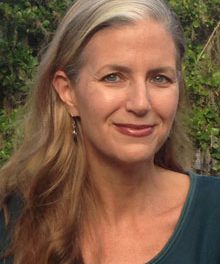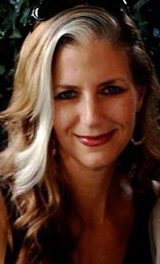 By Margaret Evans, Editor
By Margaret Evans, Editor
My family and I have recently fallen prey – and happily so – to the popular American craze known as Ancestry DNA.
Yes, we did it. We spit into the vial.
As a child, I don’t remember ever feeling like anything other than an American. Wait, that’s not exactly true; I also felt like a Southerner. But beyond that designation – American Southerner – I had no real interest in knowing who (or “what”) I was, nor whence my people hailed. It just didn’t seem important or even very interesting.
Of course, that was the era of the great Melting Pot, when forging a common culture still seemed like the thing to do, being “colorblind” was still something to strive for, and Diversity Officer was not yet a viable career aspiration. Those days are gone – for better and worse, I think – but I don’t want to get distracted.
I want to talk about my Ancestry DNA profile.
“Discover the places, history and culture that shaped who you are today, using just your DNA,” raved the website. All I had to do was spit into the vial, drop it in the mailbox, and three weeks later… voila! I had my ethnicity estimate. They call it my “DNA Story.”
My story goes like this: 57% England, Wales, and Northwestern Europe; 40% Ireland and Scotland; and 3% Germanic Europe.
In other words, I might just be the whitest person you know.
My profile did not come as a complete shock to me, but there were a few surprises. For instance, I thought my England/Wales number would be much higher that 57%. The only ancestors I know of came from England, and I always just assumed I was a direct descendant of Jane Austen. Not literally, mind you – she had no children – but figuratively, and possibly geographically. “Poor gentry” is my comfort zone. Elizabeth Bennet is my spirit animal. Stiff-upper-lipping-it – albeit with a feisty twinkle in my eye – seemed my eternal destiny.
So imagine my delight at finding that I’m 40% Scots-Irish! So many things suddenly make sense: my natural orneriness; my mid-life drift toward the Presbyterian Church, but also my inherent streak of mysticism; my lifelong love of Celtic music – yes, even those awful bagpipes, which speak to me on a subterranean level my mind can’t grasp but my heart embraces; my obsession with “Outlander” on Netflix.
The 3% Germanic Europe was a pleasant surprise, too, especially since that “genetic community” includes the Czech Republic, where my daughter is about to spend her gap year. Three percent ain’t much, so she can’t really say she’s going to “the motherland,” but since her own DNA profile estimates she’s 30% European Jewish – on her dad’s side – she’ll be getting pretty near the fatherland. (The European Jewish designation includes Belarus and parts of Poland.)
Amelia’s profile is far more exotic than mine – lucky girl! – but she was surprised to find that she’s only 12% Asian, since she’s been hearing the question “Are you Chinese?” since she was a wee girl. She definitely wasn’t expecting to be 4% Swedish – especially considering I’m not Swedish at all. (I kinda thought I would be, but she got that from her dad.)
Interestingly, my sister is 8% Swedish, and far more English/Welsh than I am – but a good bit less Scots-Irish. It seems counterintuitive, but siblings can have very different DNA profiles. Even though we get half our genes from each of our parents, which of those genes we get is totally random. Cool, huh?
A Facebook friend who works in genetics told me she won’t be spitting into the vial any time soon. She said she doesn’t trust her industry enough to give them that much information about herself, much less pay them to have it. She may be the smartest kid on the block. There may, indeed, be some terrible, Gattaca-like future awaiting us all thanks to the popularity of Ancestry DNA, 23andMe, and other such companies. But I kind of feel like my decade on Facebook has already rendered me without any real “personal information” to speak of. If I was going to worry about my privacy, I probably should have done so long ago. Like, before I started writing this column.
So, what’s the real draw here? Aside from gaining helpful medical information and finding long-lost relatives, why are Americans so interested in their DNA Stories? Why should we care where our ancestors came from?
I’m not going to lie. There’s no real “reason,” intellectually speaking. For me, it’s mostly just . . . fun? No, that’s not quite the right word. It’s more than fun. It’s fulfilling. It’s given me a sense of my own history. A sense of belonging. A sense of my place in the world.
Maybe, even in the United States of America – a land of a thousand ethnicities, where all men (and women) are created equal – we crave that connection to our particular roots. Maybe especially in a country like ours, we long to know where we came from.
It also occurs to me that, in a country increasingly obsessed with phrases like “white privilege” and “black lives matter,” the reminder that most of us are really patchwork quilts – lovable mutts and mongrels – can only be a good thing. We were comparing DNA profiles on Facebook last week, and an old friend of mine – a lovely woman with dreadlocks and skin the color of brown sugar – chimed in to say she’s 70% Sub-Saharan African, 10% Native American, and 20% Irish.
“We’re Celtic sisters!” I wrote. “I’ve always felt that!” she replied.
With our current crisis at the border, it also seems like a good time to remember our collective roots. We are a country forged by pilgrims and refugees, natives and invaders, explorers and exploiters, indentured servants and slaves. Our people come from everywhere – for all kinds of reasons. We are the hopeful, the faithful, the opportunistic, the entrepreneurial, the audacious, the committed, the shameless, the long-suffering, the visionary, the brave.
This is America the beautiful, and we are a motley crew.







